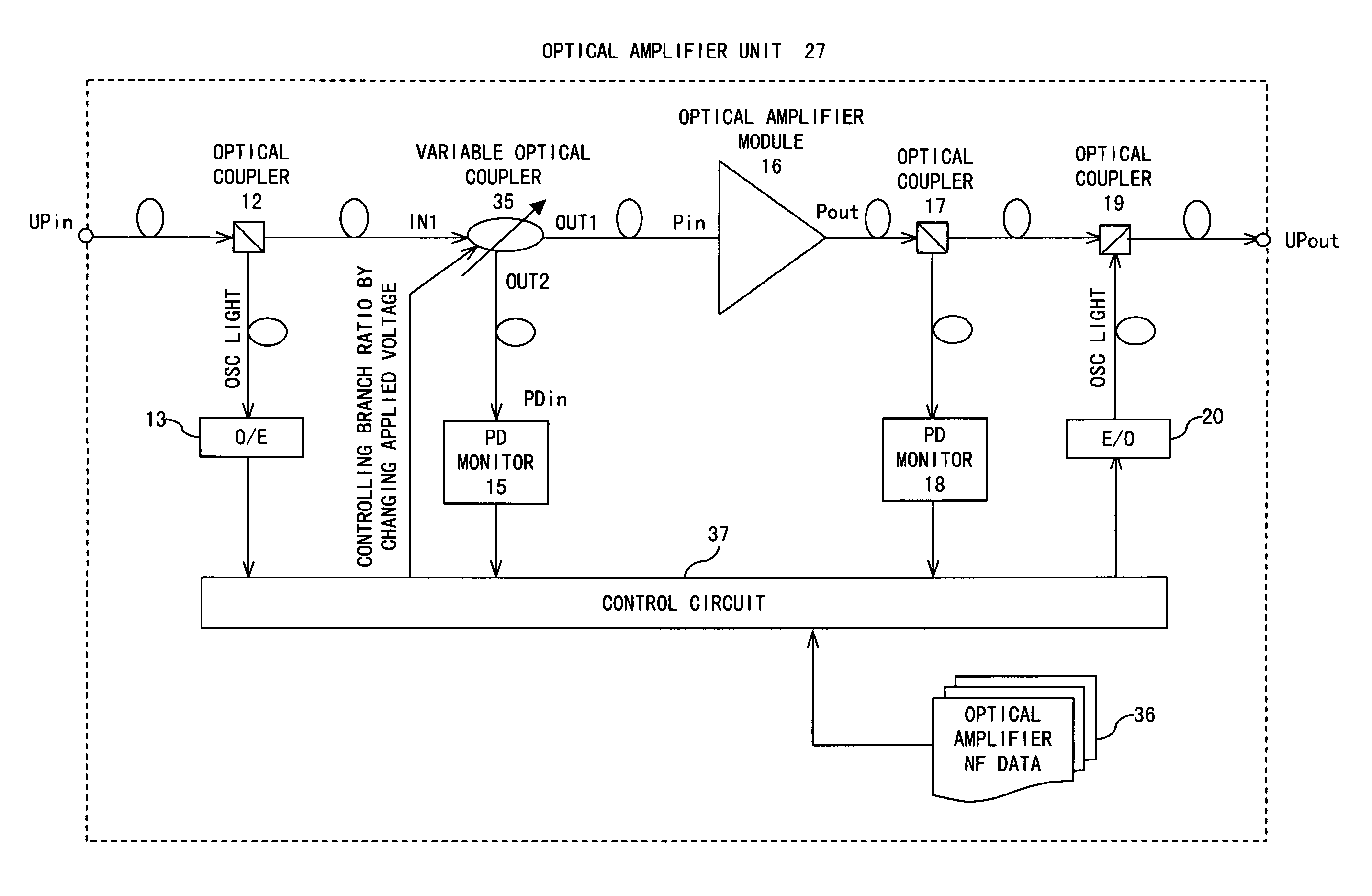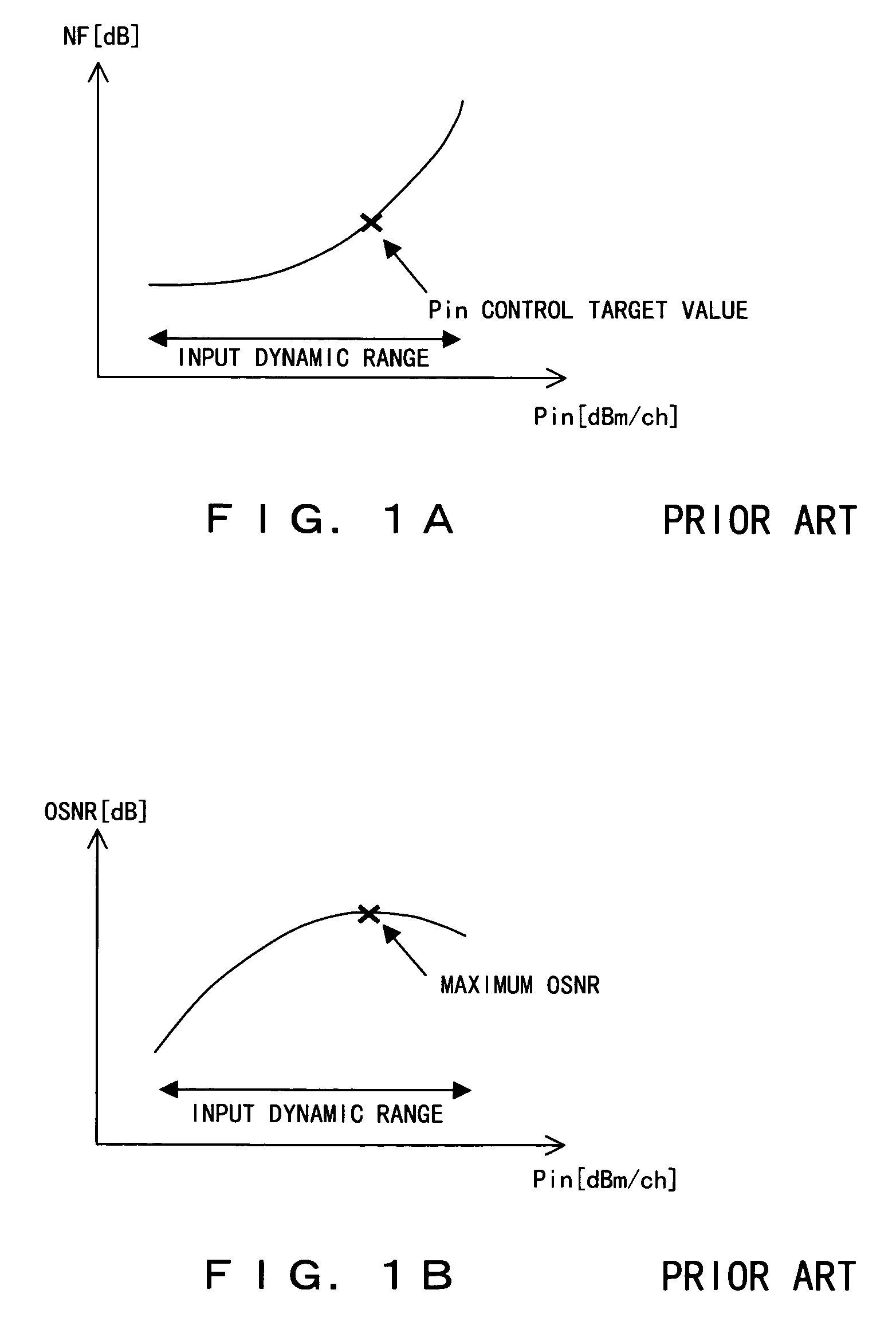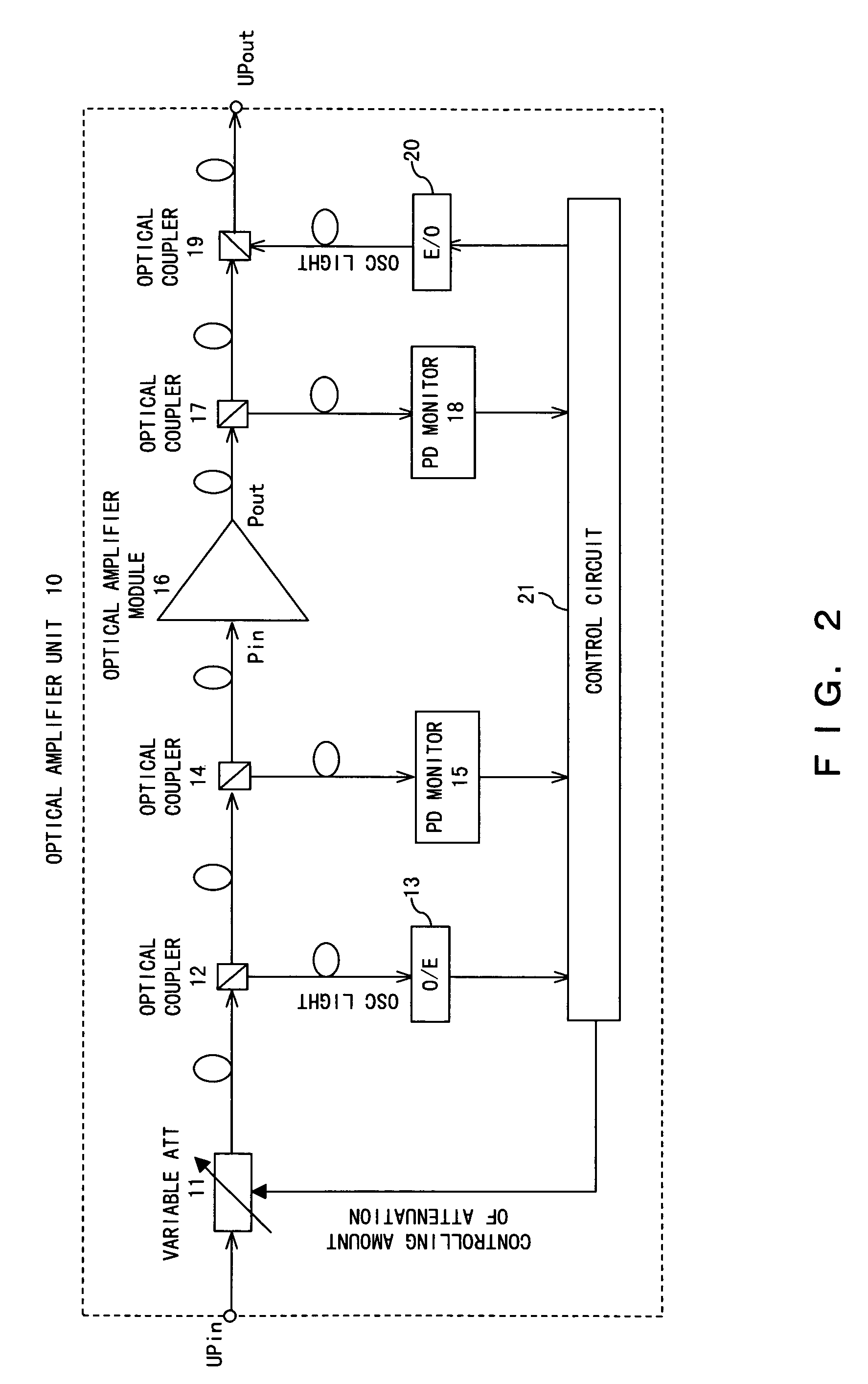Optical transmission device using a wide input dynamic range optical amplifier
a transmission device and dynamic range technology, applied in electromagnetic transmission, transmission monitoring, electromagnetic repeaters, etc., can solve the problems of wavelength dependence, varies in span loss, and difficulty in maintaining a low nf, so as to reduce optical loss, wide input dynamic range, and take a large osnr
- Summary
- Abstract
- Description
- Claims
- Application Information
AI Technical Summary
Benefits of technology
Problems solved by technology
Method used
Image
Examples
Embodiment Construction
[0038]A system configuration to which a preferred embodiment according to the present invention is applied, the configuration of an optical amplifier unit according to the preferred embodiment of the present invention, and a control flow according to the preferred embodiment of the present invention are respectively shown in FIGS. 4, 5, and 6.
[0039]In FIG. 4, optical signals having respective wavelengths transmitted from an OS (Optical Sender) 25 are multiplexed by a multiplexer 26, and transmitted to a transmission line as an optical wavelength division multiplexed signal. Optical amplifier units 27 each comprising a DCF (Dispersion Compensation Fiber) 28 provided for wavelength dispersion are arranged at predetermined intervals on the transmission line configured by an optical fiber. An interval between optical amplifier units 27 is called a span, and an intensity loss in an optical signal, which occurs in one span, is called a span loss. The optical wavelength division multiplexe...
PUM
 Login to View More
Login to View More Abstract
Description
Claims
Application Information
 Login to View More
Login to View More - R&D
- Intellectual Property
- Life Sciences
- Materials
- Tech Scout
- Unparalleled Data Quality
- Higher Quality Content
- 60% Fewer Hallucinations
Browse by: Latest US Patents, China's latest patents, Technical Efficacy Thesaurus, Application Domain, Technology Topic, Popular Technical Reports.
© 2025 PatSnap. All rights reserved.Legal|Privacy policy|Modern Slavery Act Transparency Statement|Sitemap|About US| Contact US: help@patsnap.com



